Founded in 1966 by James S. Coleman and Edward L. McDill under the aegis of the U.S. Office of Education, the enduring mission of the Center for Social Organization of Schools is to conduct groundbreaking scientific research that leads to evidence-based school reforms and the dissemination of proven programs to increase student success in school at all grade levels.
CSOS began its work as a unit of the Johns Hopkins Krieger School of Arts and Sciences and joined the SOE in 2009.
In the early years, CSOS focused largely on the effects of desegregation on schools, teachers, and students. The first CSOS report by James S. Coleman (Race Relations and Social Change, Report #1, 1967) identified CSOS as a research center to conduct rigorous research on issues that affect the quality of schools for all students. Over time, under the successive leadership of Edward McDill, John Holland, and James McPartland, CSOS broadened its focus and became one of the nation’s leading incubators of innovations in education. The recent leadership teams
of Robert Balfanz, Doug Mac Iver, and Joyce Epstein (2013-2021) and the current team of Robert Balfanz, Marcia Davis, and Steven Sheldon (2021-present) have continued to support and advance the CSOS mission and traditions.
From the mid-1970s onward, CSOS developed theories, conducted studies, refined processes, validated results, and broadly disseminated a host of evidence-based practices, programs, and tools that have assisted educators in closing opportunity gaps and meeting students’ needs.
A few major innovations developed at CSOS over the years include:
- James Coleman and colleagues’ designs and studies of academic games and simulations for use in classrooms
- John Holland’s development of the Self-Directed Search and his and colleagues’ validated assessments of vocational personality types, work environments, person-job congruence, and other tools to assist counselors in guiding adolescents’ and adults’ educational and vocational planning
- David DeVries and Bob Slavin’s studies of cooperative learning methods (such as Teams-Games-Tournaments), and Slavin’s programmatic research, development, and dissemination of Success for All — a comprehensive reading and school reform design; Success for All is one now of the most studied and implemented approaches for school improvement in the elementary grades
- Hank Becker’s research and guidelines on microcomputers in the classroom
- Joyce Epstein and colleagues’ programmatic research, development, and dissemination of the National Network of Partnership Schools (NNPS), which assists schools, districts, organizations, and states to strengthen and sustain goal-linked programs of school, family, and community partnerships for student success in school; currently, over 90 districts and organizations and about 500 schools in the U.S. and other countries implement guidelines from the NNPS for more effective and equitable programs of family and community engagement focused on students’ academic and behavioral outcomes
- James McPartland, Douglas Mac Iver, Robert Balfanz, and colleagues’ programmatic studies and expansion of the Talent Development Secondary school improvement models for grades 6–12. TDS provides evidence-based components, tools, and services to the most challenged secondary schools serving the most vulnerable students in the country. TDS’ on-site staff helps these schools build on four pillars of student success:
- Teacher teams and small learning communities
- Specialized curriculum and coaching
- Tiered student supports
- A can-do climate for students and staff
- This work has extended to the Everyone Graduates Center, led by Robert Balfanz and colleagues. Their development of early warning systems and related interventions identify and support middle and high school students at risk of dropping out to increase the number of students who graduate from high school on time. This also includes the research-based TDS Diplomas Now turnaround model—an innovative partnership with City Year and Communities In School that significantly increases the percentage of students who complete 6th and 9th grade without any early warning indicators by providing levels of support that meet the academic and non-academic needs of students. This work was further extended in the My Brother’s Keeper Success Mentors Initiative, a data-driven model in 30 districts that leverages existing and scalable school-linked resources to help schools address chronic absenteeism, and the Cross-State High School Redesign Collaboratives that involved six state departments of education and 70 high schools in using an evidence-driven school redesign process for high schools identified by the federal ESSA as in need of comprehensive improvement. The Nobody Asked Me Campaign also extends the EGC agenda to improve living conditions, quality of schooling, and other experiences of students, families, and community members living in Baltimore City.
In 2022, CSOS continued its research, development and demonstration agenda with programmatic research, where one study raises new questions that are, then, pursued in the next study. When many studies confirm effective structures and processes, the work moves on to the development stage and field-testing approaches that may be feasible for broad dissemination. Evidence-based reforms require researchers’ long-term dedication and determination to work with policy leaders, educators, and the public. CSOS faculty and staff have been building this bridge, moving school improvement approaches from research-to-policy-to-practice, for 50 years and counting.
Over more than 50 years, many researchers and staff have contributed to CSOS programs and projects. We value each one. CSOS reports, publications, and products have influenced (and continue to influence) countless researchers, graduate students, policy leaders, and educators in the U.S. and in other countries.
Learn More
-
Stocks in the Future
Stocks in the Future originated and matured at CSOS. SIF teaches financial literacy skills to middle grades students to increase their motivation to learn.
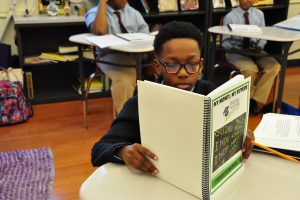
-
Baltimore Education Research Consortium
The Baltimore Education Research Consortium is a research practice-partnership that serves families and children in Baltimore City.

-
JESPAR
The Journal of Education for Students Placed At Risk (JESPAR) was founded in 1996 at CSOS.
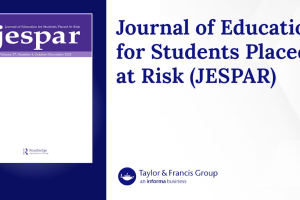
-
CRESPAR 1994-2004
The Center for Research on the Education of Students Placed at Risk (CRESPAR) was established in 1994 and continued until 2004.

Stocks in the Future
Stocks in the Future originated and matured at CSOS. SIF teaches financial literacy skills to middle grades students to increase their motivation to learn.

Baltimore Education Research Consortium
The Baltimore Education Research Consortium is a research practice-partnership that serves families and children in Baltimore City.

JESPAR
The Journal of Education for Students Placed At Risk (JESPAR) was founded in 1996 at CSOS.

CRESPAR 1994-2004
The Center for Research on the Education of Students Placed at Risk (CRESPAR) was established in 1994 and continued until 2004.

-
Diplomas Now
Diplomas Now was a secondary school model focused on meeting the holistic needs of all students in grades six through twelve.
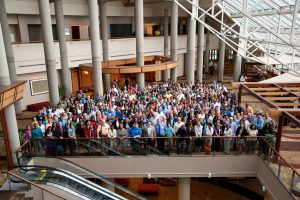
-
Building a Grad Nation
The GradNation campaign was launched in 2010 to bring a broad coalition to the graduation challenge.
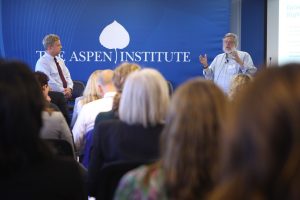
-
My Brother’s Keeper
In 2014, President Obama launched the My Brother’s Keeper initiative to ensure that youth have opportunities to improve life outcomes and overcome barriers.
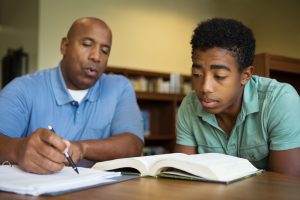
Diplomas Now
Diplomas Now was a secondary school model focused on meeting the holistic needs of all students in grades six through twelve.

Building a Grad Nation
The GradNation campaign was launched in 2010 to bring a broad coalition to the graduation challenge.

My Brother’s Keeper
In 2014, President Obama launched the My Brother’s Keeper initiative to ensure that youth have opportunities to improve life outcomes and overcome barriers.
